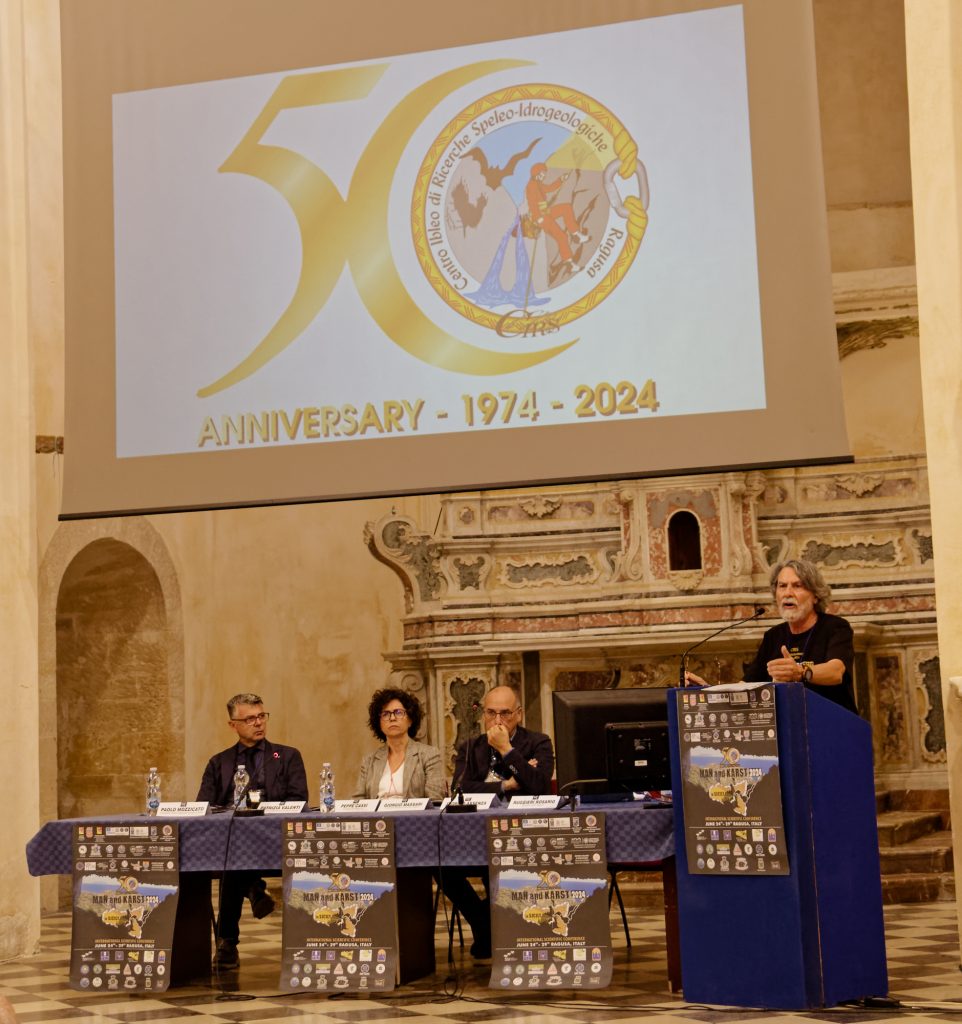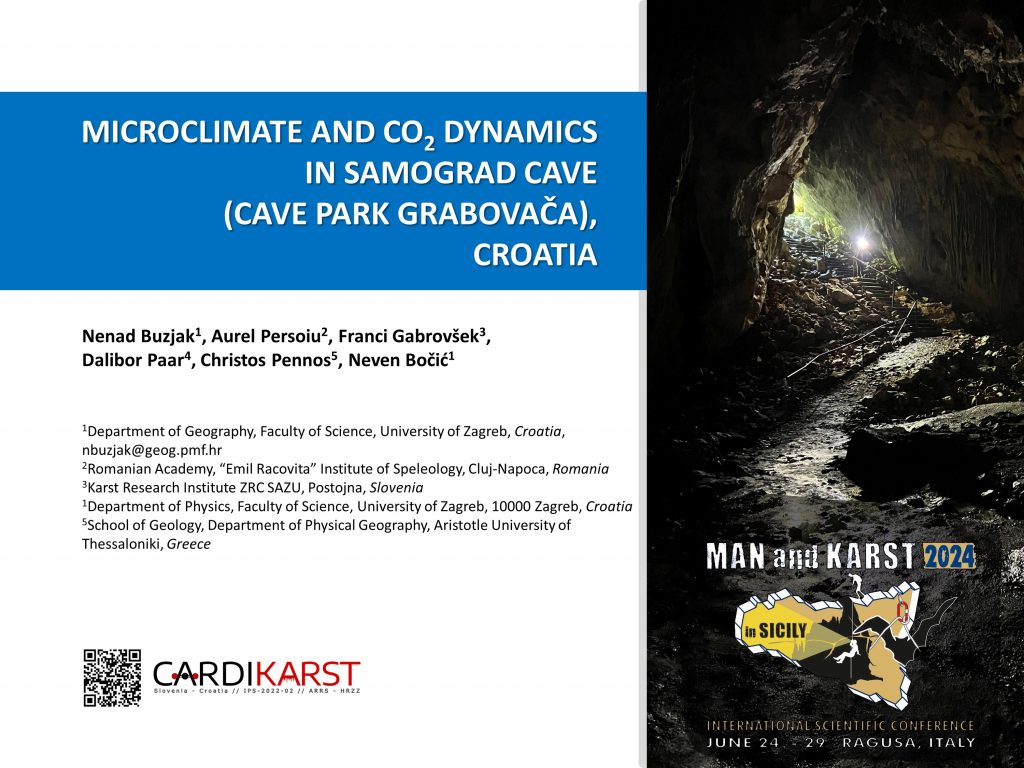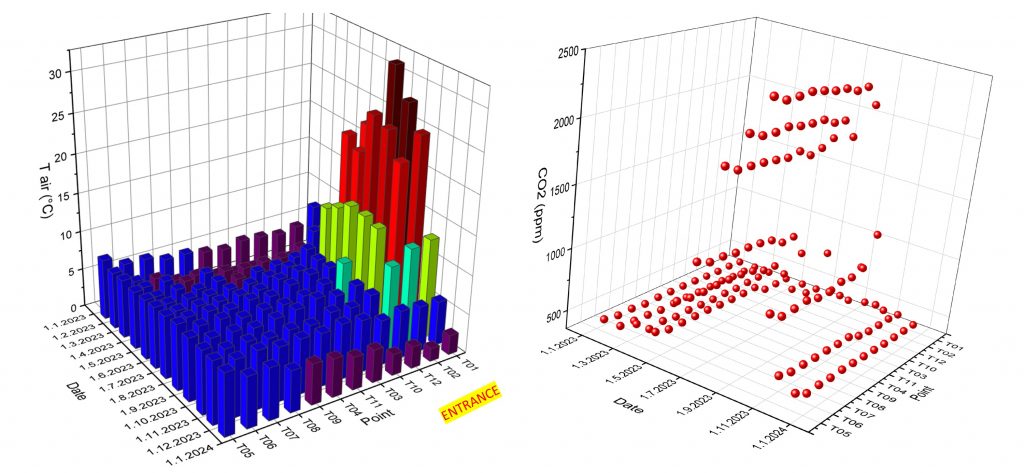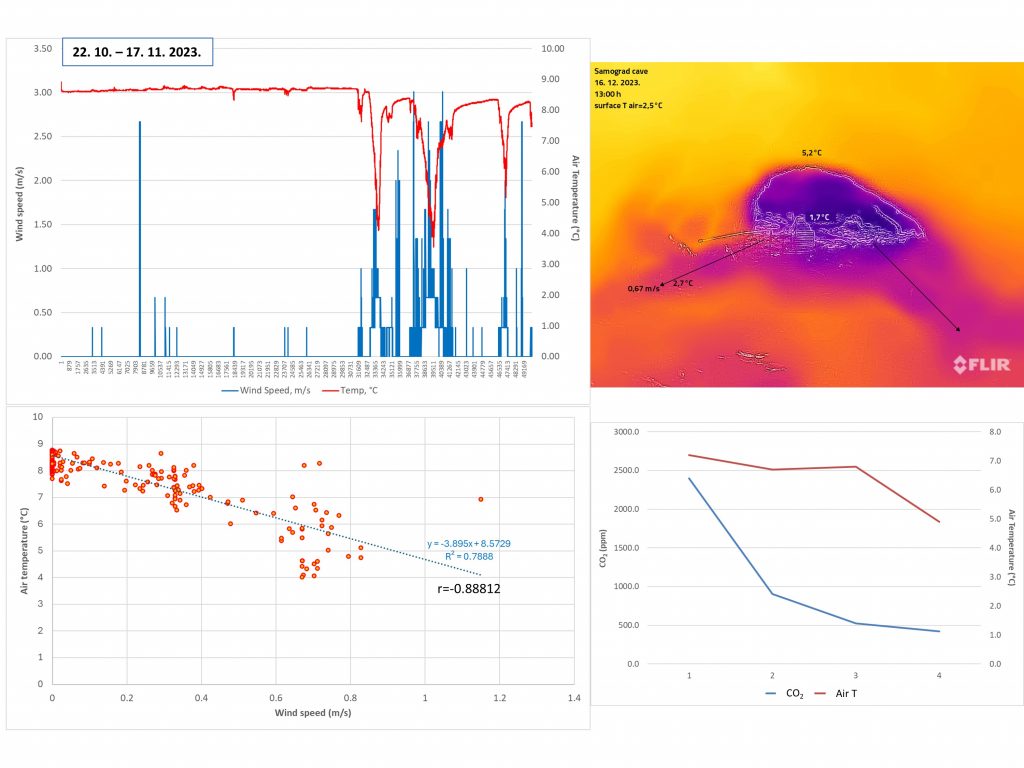International scientific conference MAN and KARST 2024. was organized by the CIRS – Hyblean Center of Speleo-Hydrogeological Research and held in Ragusa, Siciliy 24.-29. 6. 2024. In the same way as the previous past editions (2019 and 2022), conference wants to give a contribution to the knowledge, enhancement and safeguard of the karst landscape and caves with their ecosystems and historical-anthropological resources as a whole, as an instrument and optimal function of scientific research, not as often for its own sake or for the sake of a few users, but rather, at the service and for the benefit of the whole community.
The project CARDIKARST contributed with a lecture “Microclimate and CO2 dynamics in Samograd Cave (Cave Park Grabovača), Croatia” by Nenad Buzjak, Aurel Persoiu, Franci Gabrovšek, Dalibor Paar, Christos Pennos and Neven Bočić.
Lecture ABSTRACT:
Samograd Cave is located on Grabovača hill in Perušić (Lika region, Croatia) at 684 m a.s.l. It features a simple morphology with a single entrance and a single, up to 32 m high, up to 30 m wide and 346 m long passage that is descending to the depth of 53 m and then ascending to the last part where the bottom is at the level of entrance line. The entrance is formed by a breakdown at the bottom of a large collapsed doline, shady and overgrown by woody and scrub vegetation. Such morphology is pivotal for understanding the cave’s microclimate. The cave is a tourist destination, albeit with a pronounced seasonality, most visits occurring from spring to fall, while in winter the cave has little to no visitors.
The primary aim of this study is to monitor surface and cave air temperature, air relative humidity, soil temperature, and CO2 concentration to assess the impact of natural ventilation and tourism on the cave’s microclimate, particularly concerning CO2 levels. A second objective is to compare the effectiveness of continuous vs. spot measurements in terms of data quality and trend recording under conditions where there are insufficient measuring units available for continuous monitoring.
Continuous hourly air T and RH data logging was conducted along a longitudinal profile from outside the cave to its end. On the deepest point of the cave, a logger was measuring CO2 levels on an hourly basis. Additionally, at the cave entrance, a meteo-station with ultrasonic anemometer was recording air speed and direction, air T, RH, and pressure with less than one-minute intervals. Spot measurements of air, water and soil T, RH and CO2 levels were carried out monthly at the surface and 11 different points along the cave passage using handheld instrument. The data show a significant seasonal difference between the cold and warm parts of the year. Due to increased ventilation caused by the inflow of denser, colder air from the surface into the cave in winter, there is a noticeable drop in air and soil temperatures and decrease in CO2 concentration towards lowest part and increase towards the higher cave’s end. The influx of cold air is marked by the formation of ice stalagmites at the entrance zone. As it moves inside the cave, this air is heated and circulates in reverse direction towards the entrance along the ceiling. As a result, strong condensation occurs along the ceiling and the cave dew mixing with epikarst water drips and form puddles and a shallow pool on the floor. In summer, this ventilation ceases, and T are slightly higher but stable, while CO2 concentrations increases. Our data shows that less frequent but spatially dense spot measurements are key to understand the dynamics of cave atmosphere, complementing data obtained by continuously operating loggers. This ongoing study underscores the importance of continuous and detailed environmental monitoring to preserve the natural heritage and ensure the ecological stability of caves.
This work has been supported in part by Croatian Science Foundation under the project Dynamics and distribution of CO2 in karst vadose and epiphreatic zone (CARDIKARST) IPS -2022-02-2260.







